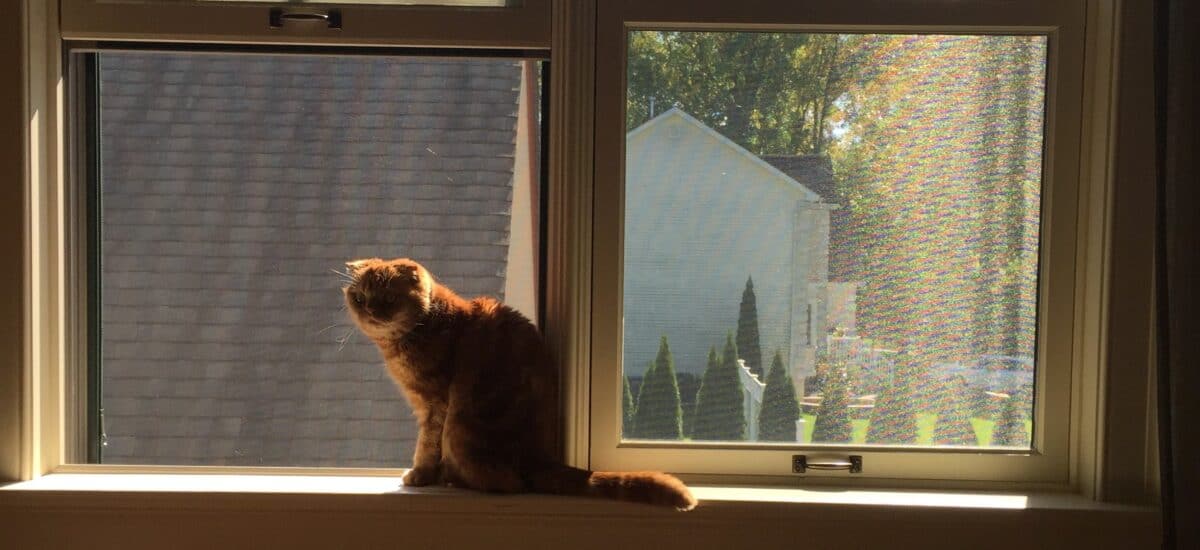Cat Peeing Outside The Litter Box? What To Do Next

Every cat owner knows that the litter box is a special place. It’s a place where our furry friends can do their business in peace and privacy. So, what do you do when your cat starts peeing outside the box? In this blog post, we’ll explore some of the reasons why cats may start engaging in this behavior and offer some tips on how to get them back on track.
Behavioral Reasons for Cats Peeing Outside the Litter Box
There are also a number of behavioral reasons why cats may start urinating outside the box. These are more common than medical issues, so watch your cat’s behavior and try to figure out if you think the issue is a behavioral one.
One huge factor of cats’ peeing in the wrong place if the litter box is not clean enough. Some cats will simply refuse to use it. If the bottom is too soggy, too smelly, or the litter box hasn’t been fully emptied and/or given new litter recently it’ll be an absolute no-go for some cats. They will wait as long as they can for this to get fixed, but the next step will be a number 1 or number 2 someplace else in your home, often nearby the litter box.
Other cats may associate the litter box with something negative, like getting scolded after using it, and start avoiding it as a result. So if your cat has an accident, or perhaps sprays near the box or misses the box by a little, then be careful about your reaction and understand that some cats will associate the box with the scolding.
Additionally, some cats simply prefer to urinate in certain types of substrate (i.e., sand, dirt, etc.), which they cannot find in a traditional litter box. We don’t recommend letting your cat outside, but if you then the litter box question can become much more complicated when they do come inside.
Lastly, and this is also a big one, litter type can cause cats to reject the litter box. If you move from litter A to litter B it can cause issues. But don’t forget that a cat’s preference can change as sell. For example, older cats and develop arthritis and other issues which make harder, crunchier litter unpleasant for their paws. If this happens you may need to shift from a clay-like litter (like Dr. Elsey’s Precious Cat Ultra Cat Litter) to something more gentle, like a pine or newspaper-based litter.
Litter Types
Litter types matter to cats… more than toilet paper types matter to people! For picky cats you’ll need to buy based on a cat’s preference, not simply which is on discount at the moment.
Clay Litter
One of the most popular types of litter is clay litter. Clay litter is made from, you guessed it, clay. It’s typically inexpensive and does a good job of absorbing urine and masking odors. However, some cats don’t like the feel of clay on their paws, and it can track easily if your cat is a vigorous digger.
Paper Pellet Litter
Another popular option is paper pellet litter. This type of litter is made from recycled paper that has been formed into pellets. It’s absorbent, doesn’t track as much as clay litter, and some cats find it more comfortable to walk on than other types of litter. However, it can be more expensive than clay litter, and some formulas don’t do as good of a job at masking odors.
Natural Litter
There are also several types of natural litters on the market made from materials like corn, wheat, pine, and recycled newspaper. Natural litters are often more expensive than traditional litters, but they tend to be more biodegradable and have little to no scent. This can be beneficial if your cat is sensitive to smells. However, some natural litters don’t clump as well as others, which can make cleanup more difficult.
Medical Reasons for Cats Peeing Outside the Litter Box
There are a number of medical conditions that can cause a cat to start urinating outside the box.
For example, urinary tract infections are relatively common in cats and can cause them to feel the urge to go more often than usual. If your cat is going outside the box more frequently or seems to be straining when using the litter box, it’s worth investigating whether a urinary tract infection might be the cause. This will require a vet to get involved as it won’t be immediately obvious if it’s happening, but there are signs that you can use to identify if that a cat UTI might be the cause.
Other conditions that can lead to urination outside the box include diabetes, feline interstitial cystitis (a condition that causes inflammation of the bladder), and kidney disease. If you suspect that your cat’s urination issues might be due to a medical condition, it’s important to take them to see a vet as soon as possible.
Tips for Getting Your Cat Back in the Litter Box
If you’re dealing with a cat that’s started peeing outside the box, never fear! There are a number of things you can do to get them back on track.
First and foremost, make sure that their litter box is clean and located in a quiet area where they feel safe using it.
You should also try experimenting with different types of litter until you find one that your cat likes best.
Additionally, if you think stress might be playing a role in your cat’s urination issues, consider investing in some calming products made specifically for cats (e.g., Feliway diffusers).
Finally, if all else fails, it’s worth consulting with a professional animal behaviorist who can help you figure out what’s causing your cat’s distress and offer additional tips on how to get them back in the litter box for good.
Wrapping Up
No one likes dealing with a cat that’s started peeing outside the litter box—but luckily, there are things you can do to fix the problem. In most cases, behavioral factors are at play rather than medical ones. However, it’s always important to rule out any potential medical causes first before taking any further steps. Once you’ve ruled out any underlying health problems, there are a number of things you can do to get your cat back on track; from making sure their litter box is clean and located in a safe area to experimenting with different types of litter or investing in some calming products made specifically for cats. If all else fails, don’t hesitate to reach out to a professional animal behaviorist for help getting your furry friend back into their litter box for good!
